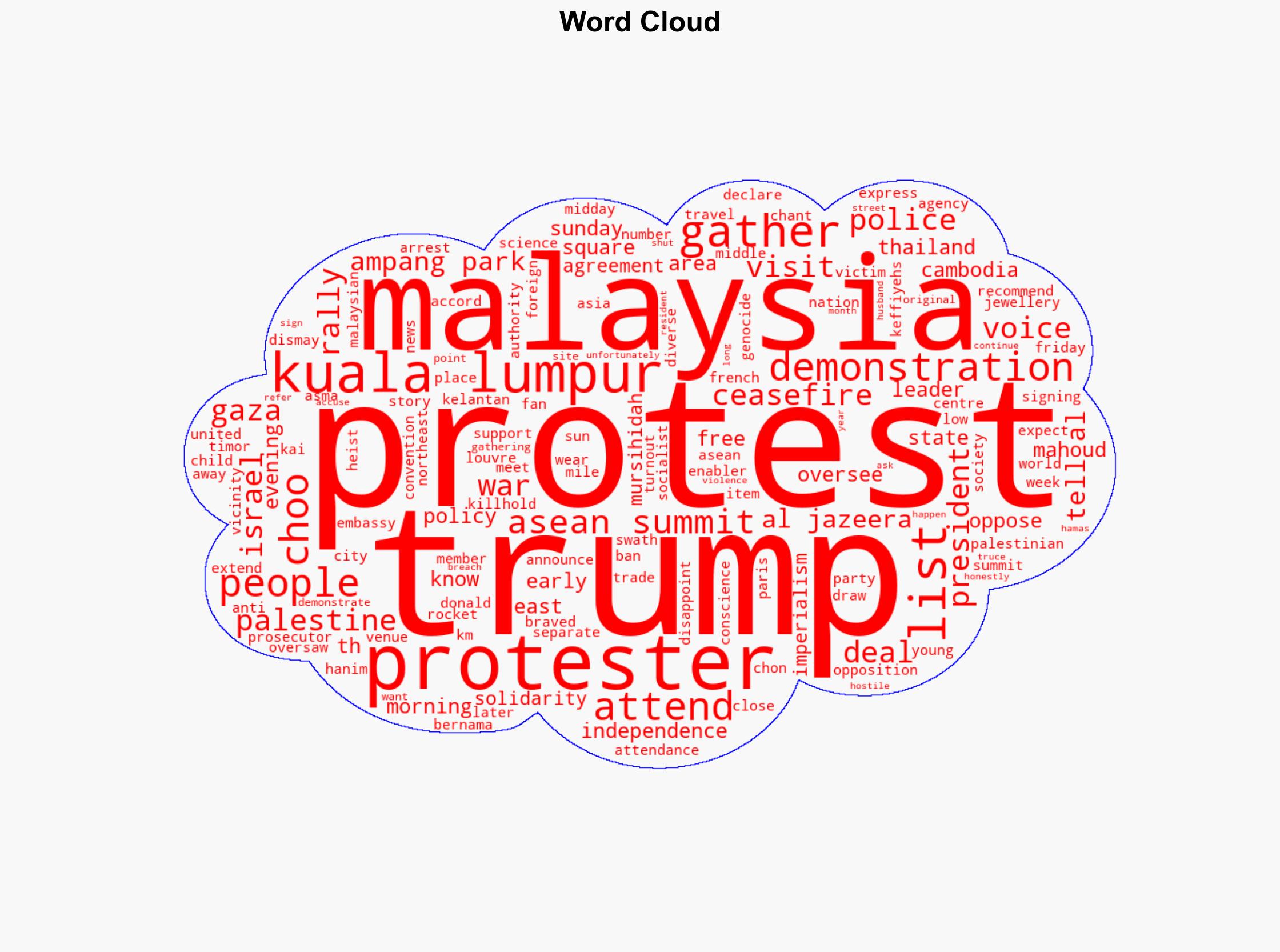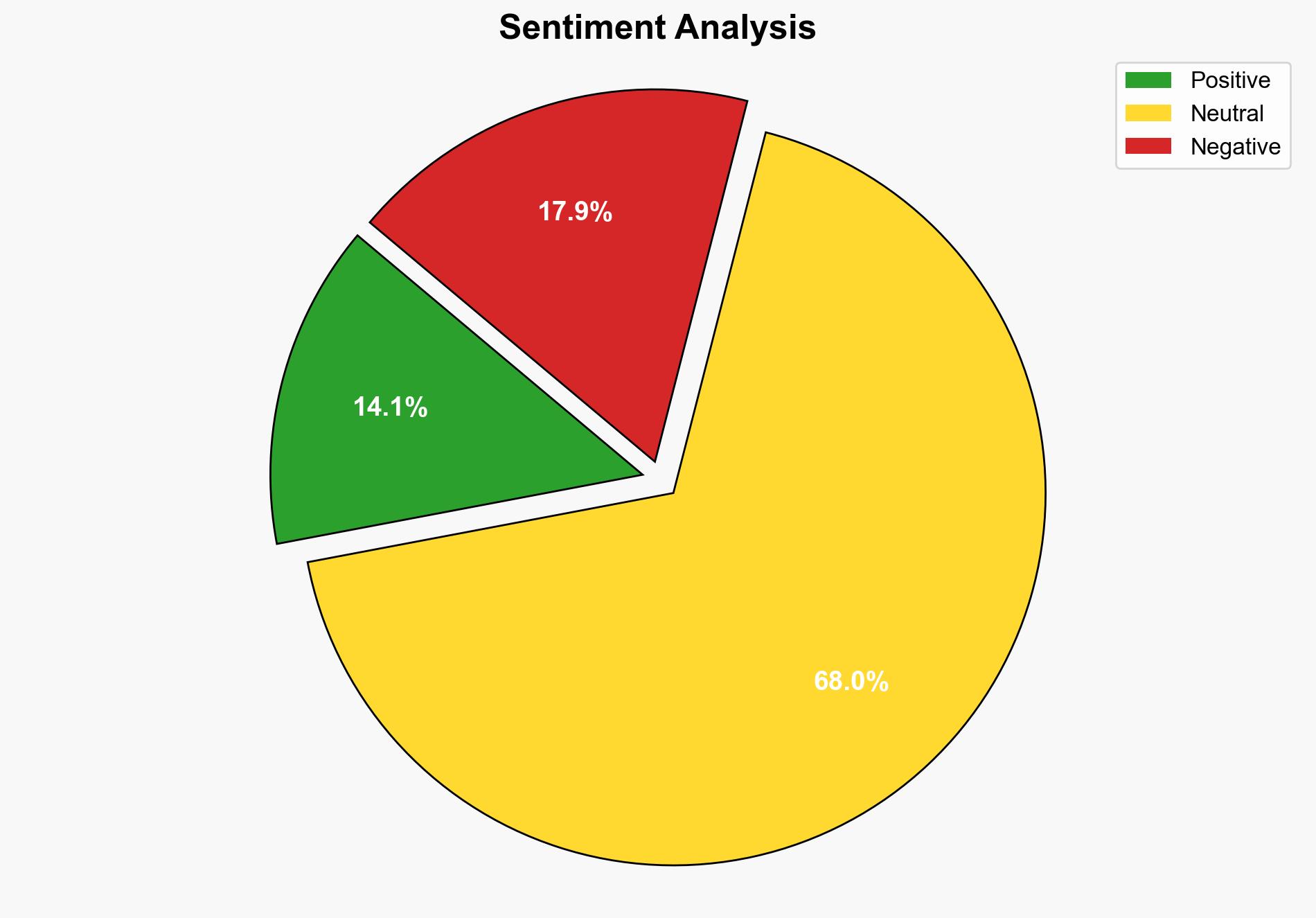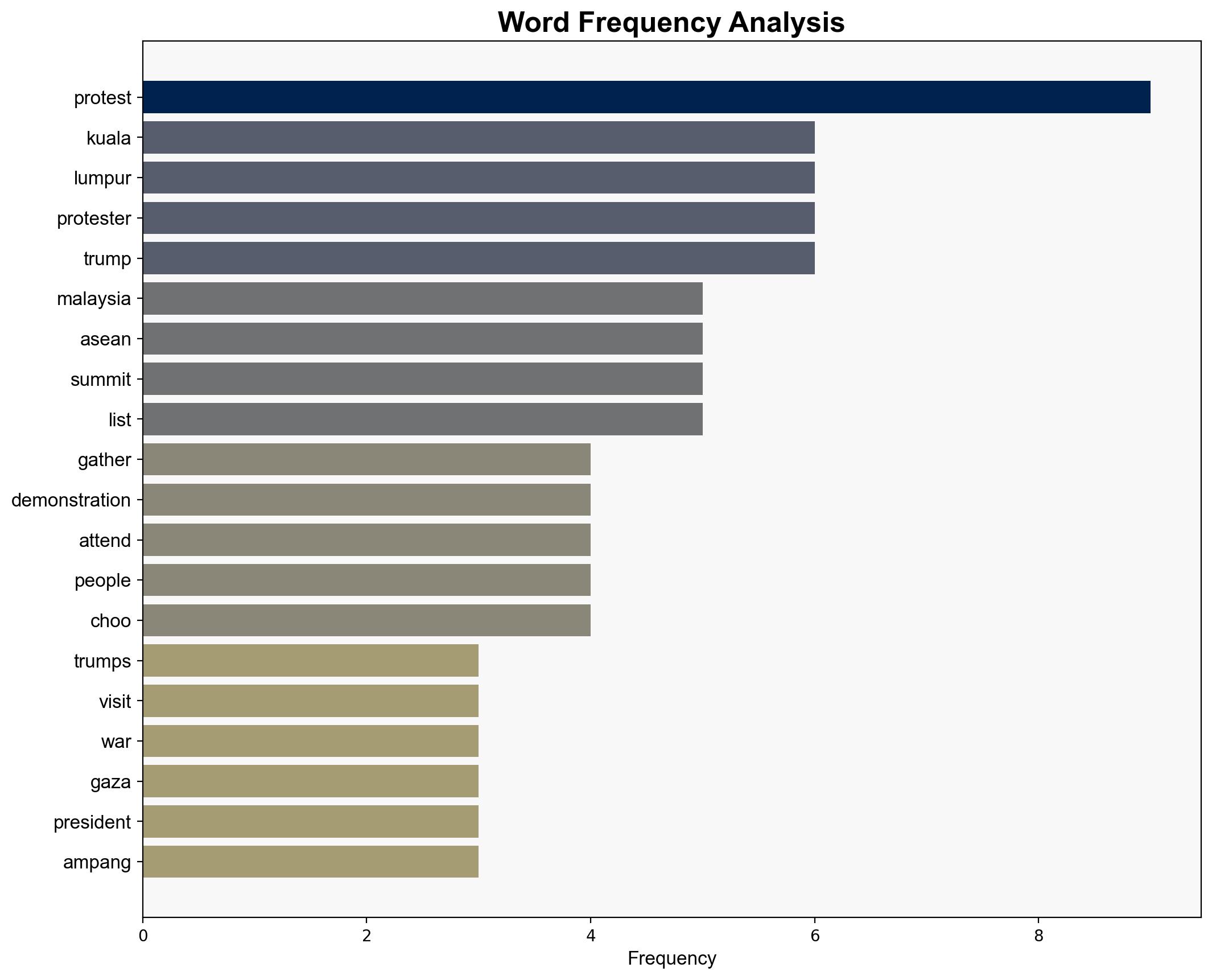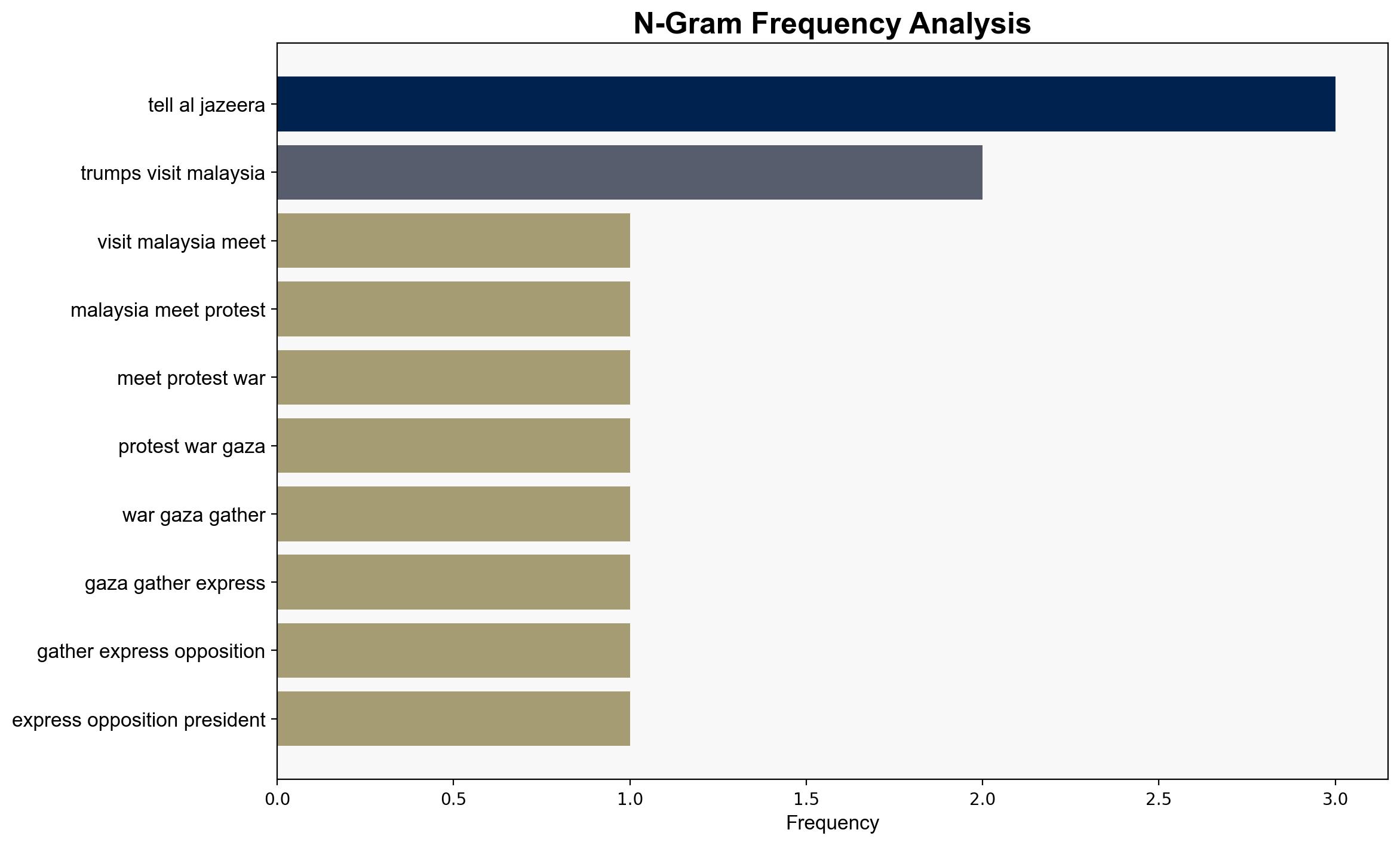Trumps visit to Malaysia met with protests over war in Gaza – Al Jazeera English
Published on: 2025-10-26
Intelligence Report: Trump’s Visit to Malaysia Met with Protests Over War in Gaza – Al Jazeera English
1. BLUF (Bottom Line Up Front)
The protests during Trump’s visit to Malaysia highlight significant regional discontent with U.S. foreign policy in the Middle East, particularly regarding the conflict in Gaza. The most supported hypothesis suggests that these protests are primarily driven by genuine grassroots opposition to U.S. policies perceived as enabling Israeli actions in Gaza. Confidence in this assessment is moderate due to the potential influence of organized political groups. It is recommended to monitor regional sentiment and assess potential impacts on U.S.-ASEAN relations.
2. Competing Hypotheses
1. **Hypothesis A**: The protests are primarily a grassroots movement reflecting widespread public discontent with U.S. foreign policy in the Middle East, particularly its support for Israel in the Gaza conflict.
2. **Hypothesis B**: The protests are orchestrated or significantly influenced by political groups seeking to leverage anti-U.S. sentiment to advance their own agendas, potentially exaggerating the scale of public opposition.
Using ACH 2.0, Hypothesis A is better supported by the diversity of protestors and the presence of individuals traveling long distances to participate, indicating genuine grassroots involvement. Hypothesis B is weakened by the lack of clear evidence of organized political manipulation, though the involvement of political figures like Choo Chon Kai suggests some level of influence.
3. Key Assumptions and Red Flags
– **Assumptions**: It is assumed that the protests reflect genuine public sentiment rather than being primarily politically orchestrated. It is also assumed that the protests are a direct response to U.S. policies rather than broader anti-imperialist sentiments.
– **Red Flags**: The potential underestimation of political influence in organizing the protests. The possibility of selective reporting by media sources, which could skew perception of the protests’ scale and motivation.
4. Implications and Strategic Risks
The protests could signal a broader regional trend of increasing anti-U.S. sentiment, potentially affecting diplomatic relations and cooperation within ASEAN. There is a risk of escalation if similar protests occur in other ASEAN countries, potentially impacting U.S. interests and regional stability. The protests may also embolden political groups to further exploit anti-U.S. narratives.
5. Recommendations and Outlook
- Engage in diplomatic outreach to ASEAN member states to address concerns and clarify U.S. positions on Middle Eastern policy.
- Monitor regional media and social media for shifts in public sentiment and potential protest activities.
- Scenario Projections:
- **Best Case**: Protests remain peaceful and do not significantly impact U.S.-ASEAN relations.
- **Worst Case**: Protests escalate, leading to violence and a deterioration in diplomatic ties.
- **Most Likely**: Protests continue sporadically, with limited impact on broader U.S. regional strategy.
6. Key Individuals and Entities
– Donald Trump
– Asma Hanim Mahoud
– Choo Chon Kai
– Mursihidah
7. Thematic Tags
national security threats, regional focus, U.S. foreign policy, grassroots movements, Middle East conflict




